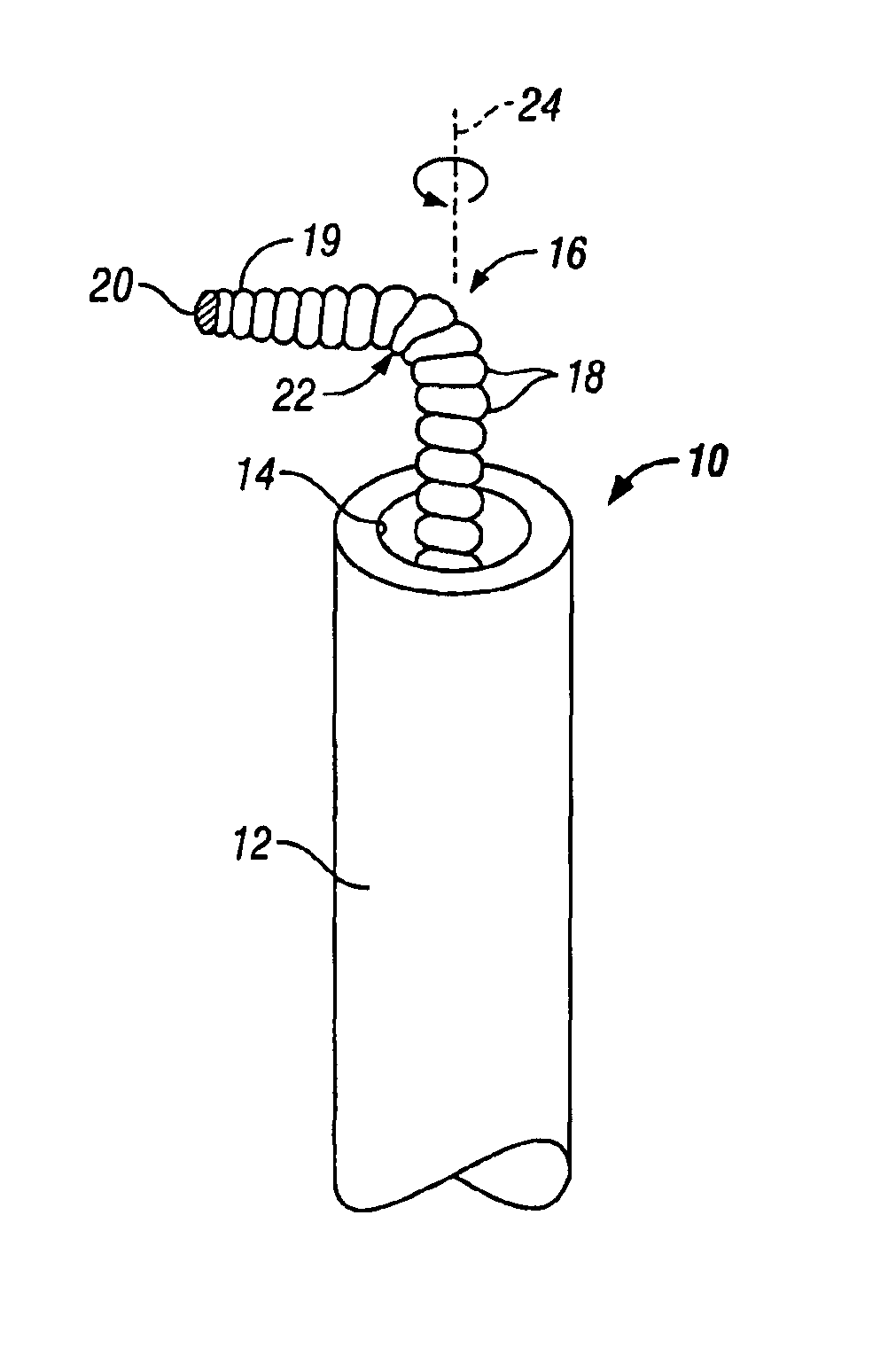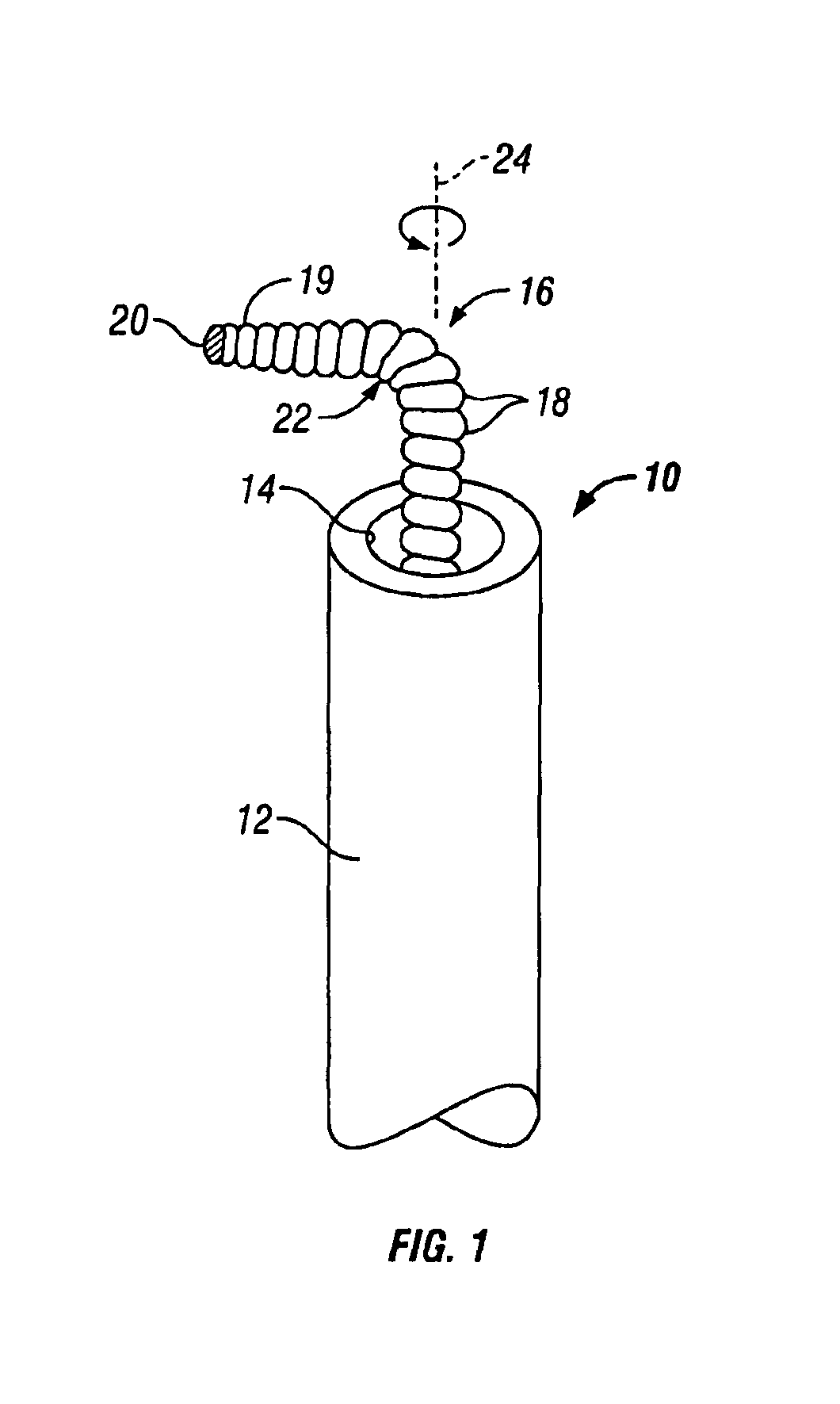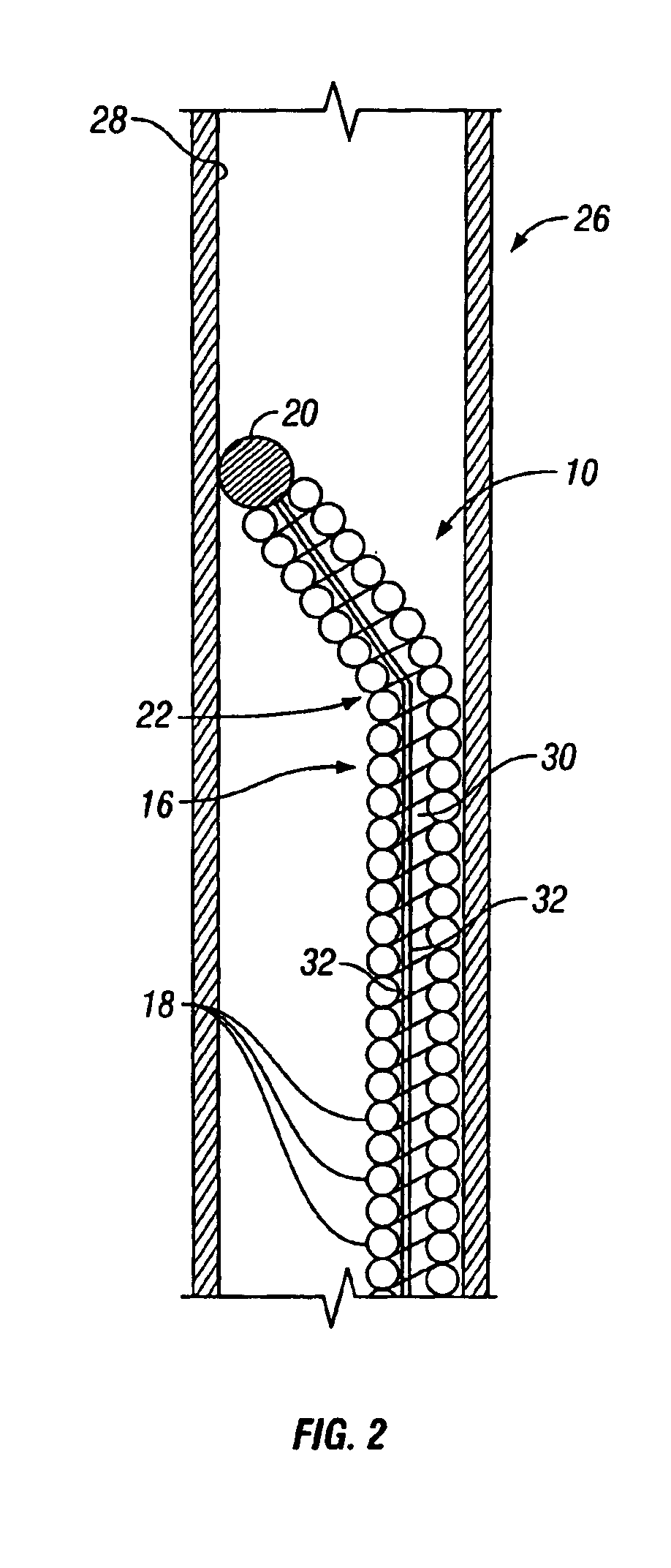Device for sensing parameters of a hollow body organ
a technology of hollow body organs and sensors, applied in the field of invasive medical devices, can solve the problems of inability to determine whether the inflamed plaque is inflamed, unstable type, and unstable type, and achieve the effect of maintaining sterility and increasing the sampling resolution
- Summary
- Abstract
- Description
- Claims
- Application Information
AI Technical Summary
Problems solved by technology
Method used
Image
Examples
Embodiment Construction
[0058]FIG. 1 shows a device 10 for profiling the wall of a hollow body organ. Device 10 includes a lumened catheter 12 having a central lumen 14, a hollow guidewire 16 that defines a conduit comprising a metal wire 18 or the like in the shape of a coil defining a central lumen (not shown), and a thermal sensor 20 disposed at the terminal end of the distal portion of guidewire 16. Conventional conductors or other signal carrying structures (not shown) are provided to convey signals from the thermal sensor 20 along guidewire 16 and out of the proximal portion of guidewire 16 for connection to appropriate signal processing apparatus that converts the signals to a temperature indication. Thermal sensor 20 can be, e.g., a thermocouple, a thermistor, an infrared radiation sensor, fiberoptic oxygen sensor, ultrasonic transducer, impedance sensor, pH sensor, mechanical force sensor (e.g., strain gauge), etc., for example, and is secured by appropriate mechanical or adhesive means to the ter...
PUM
 Login to View More
Login to View More Abstract
Description
Claims
Application Information
 Login to View More
Login to View More - R&D
- Intellectual Property
- Life Sciences
- Materials
- Tech Scout
- Unparalleled Data Quality
- Higher Quality Content
- 60% Fewer Hallucinations
Browse by: Latest US Patents, China's latest patents, Technical Efficacy Thesaurus, Application Domain, Technology Topic, Popular Technical Reports.
© 2025 PatSnap. All rights reserved.Legal|Privacy policy|Modern Slavery Act Transparency Statement|Sitemap|About US| Contact US: help@patsnap.com



